As with the vast majority of the 712 survivors of the Titanic disaster, the memory of Dr. Alice Farnham-Leader generally evokes the simple, two-word descriptor: “Titanic survivor.” Her decades-long career as a prolific physician, researcher, consultant, and medical commentator is recalled only by the title “Doctor” before her name on lists of Titanic survivors. The fact that she was a woman physician, or “doctress,” to recall the sometimes-used parlance from her time, in an era when the practice of medicine was overwhelmingly dominated and dictated by men makes this omission in the historical record all the more unfortunate.
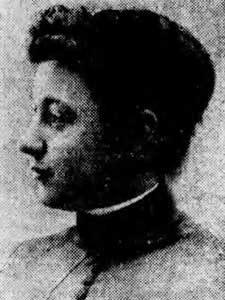
(New York Herald)
It is the purpose of this article to attempt to bring to the full attention of the Titanic history community the surprisingly prolific career of this undoubtedly remarkable woman. It has been written, in a vague fashion, that Dr. Farnham-Leader specialized in the treatment of the insane, and it has on at least one occasion been said that by the time she boarded the Titanic, she was retired. The reader will find that our extraordinary subject had her hand in many pots besides psychiatry and that she was most certainly not retired by 1912.
Miss Alice May Farnham was born in Batavia, New York, on May 10, 1862, to Frances Elizabeth and Reuben Humphreys Farnham. Little Alice was the first of the couple’s eventual five children.
Following her matriculation from the Attica Union Academy, Alice took a step that, for the period, was quite unusual for a young lady: she chose to become a physician.
Accepted by the prestigious Woman’s Medical College of Philadelphia, Alice graduated, along with twenty or twenty-five other “fair doctors,” on March 13, 1884.
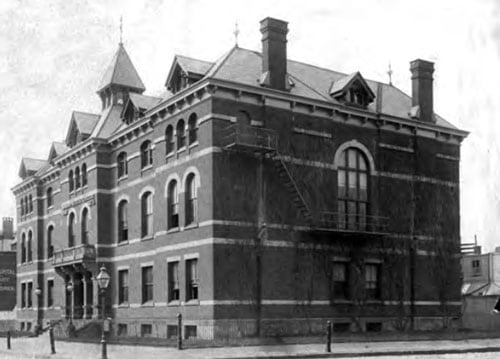
(philadelphiaencyclopedia.org)
Founded in 1850 by a group of progressive Quakers as the Female Medical School of Pennsylvania, the college was the first in the world established to train women in medicine, awarding them the degree of MD. It was the auspicious beginning of a very successful career for the newly-christened Dr. Alice Farnham. Regrettably, with her graduation having taken place in 1884, there was no formal class photograph taken; the earliest from the school’s archives dates to 1887.
Dr. Farnham’s climb up the proverbial career ladder received a good deal of attention from the local press. Her initial specialization, and what appears to have been a particular passion for her, was the treatment of the insane. On October 16, 1886, it was reported that Dr. Farnham had received an appointment by the State Civil Service Examining Board of New York as one of the resident physicians of the Willard Asylum for the Chronic Insane in Ovid. It was noted that she had “passed a highly creditable and satisfactory civil service examination.”
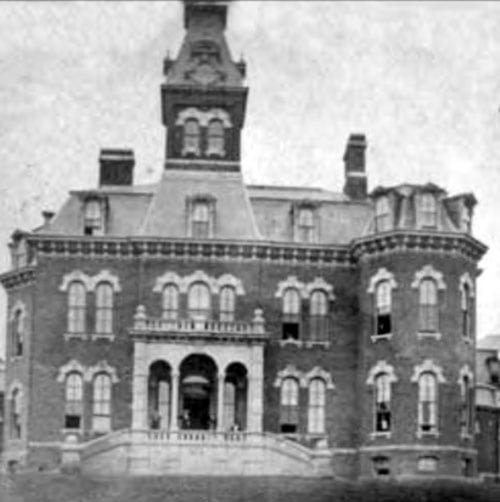
(New York Public Library via wikimediacommons.org)
Dr. Farnham appears to have shown an early aptitude for medical research with a focus on advancing proper treatment, and even her early results warranted attention in print. Dr. David Mitchell, MD notes that she “had a very practical approach to health and research, which was probably uncommon at the time.” In December 1889, an issue of a long-defunct parenting publication called Babyhood carried an article of “importance” authored by her called “Proper Training of Nervous Children.” This strongly suggests that during her tenure at the Willard Asylum for the Chronic Insane, Dr. Farnham encountered and studied a number of pediatric patients afflicted with nervous and/or psychiatric ailments.
Seemingly possessed of an insatiable intellectual curiosity, on January 29, 1890, Dr. Farnham sailed for Europe to pursue further medical studies in Paris and Vienna. It was noted that at the time of her departure, she was working at the Hart’s Island Lunatic Asylum. Concluding her studies in July 1890 in Paris, at which time she was staying in Auvers-sur-Oise, Dr. Farnham sailed for home aboard the Red Star Line’s Friesland. Oddly, on the passenger manifest, she was recorded as being nineteen years old, while, in fact, she was twenty-eight.
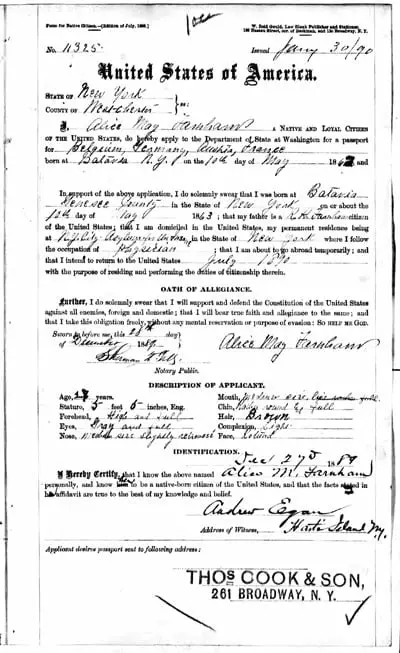
(National Archives and Records Administration)
Also in 1890, Dr. Farnham’s research into various “women’s disease” amongst the insane was reported as having some rather interesting results. “Dr. Alice Farnham, at one time an assistant physician at the Willard Asylum, found from an examination of a number of cases taken seriatim [consecutively] from the patients of two wards a larger proportion of cases free from so-called women’s diseases than she found in an equal number of the same social class out of the asylum.”
At this point in Edwardian medical knowledge, a number of physicians and medical researchers hypothesized that instances of psychiatric afflictions in women could be ascribed to female organs, a certain “uterine psychology.” Dr. Farnham’s research appears to have gone some way toward dispelling this antiquated theory, at least in print. From 1892: “There is no uterine psychology. The fact that a large proportion of insane women are also the victims of uterine disorders proves nothing at all. The same may be said of the women of any community. Dr. Alice Farnham, while an assistant at the Willard State Hospital, examined consecutively a large number of insane women in the hospital and an equal number of sane women in almshouses and houses of detention, and found that uterine and ovarian disease in the latter class exceeded the proportion in the former.”
On November 2, 1892, Dr. Farnham was married to a fellow physician, Dr. John Augustine Leader. The ceremony took place in St. Joseph’s Roman Catholic Church in Buffalo, New York.
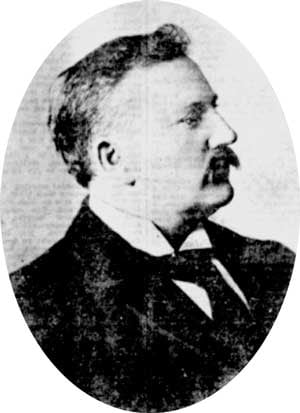
Dr. John Augustine Leader was born in Auburn, Maine in January 1863. He was educated at Edward Little High School, going on to study medicine at the University of Vermont, from which he graduated in 1888. Afterwards, he also studied at the Bellevue Hospital Medical College.
A man of high social standing, Dr. Leader was a member and examining physician of the Knights of Columbus, a member of the Ancient Order of Hibernians, and examining physician of the New England Order of Protection, Court Physician A.O.F. of A. He was also the examining physician of the Elks Club, and was Chairman of the Board of Health of Lewiston, Maine, and from June 1895, he was also a member of the local school board. His other memberships included the Maine Academy of Medicine and Science, and he was at one time on the surgical staff of the Sisters of Charity Hospital in Lewiston.
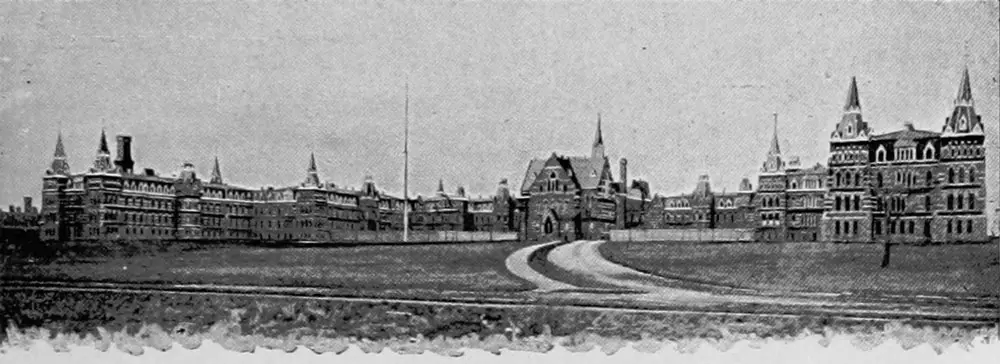
(wikimediacommons.org)
In July 1893, Dr. Alice Farnham-Leader and her husband both submitted their resignations from the New York City Insane Asylum, announcing their intention to go into private practice in Dr. John Leader’s former hometown of Lewiston, Maine. It was not specified at the time what the specialty of the couple’s practice would be, though given the mutual history of their careers, it would be a safe assumption to believe it was psychiatry.
On March 23, 1896, nearly twelve years before her terrifying ordeal in the Titanic disaster, water nearly claimed the life of Dr. Farnham-Leader and her husband. The couple had been visiting in Auburn, and started to return on the lower ferry boat, which crossed the Androscoggin River just below the piers of “the old south bridge.”
The doctors, along with a number of other passengers, were riding in a carriage led by horses. The ferry was crowded by the teams of horses, so that when the Leaders drove onto the ferry, the rear wheels of their carriage came within about three feet of the end of the boat. All there was to guard the rear end of the ferry was a big rope laid across the stern.
When the boat had gotten out about forty feet into the river, Dr. John Leader’s horse suddenly began to back up, and before he could be stopped, he had backed their carriage over the end of the boat into the Androscoggin. The Leaders were both thrown out of the carriage and into the water. Dr. John Leader was encumbered with a heavy fur coat, but in spite of this, he took his wife on his back and struck out for the shore. It was a hard swim, but the couple made it to shore safely. The horse floundered about a few moments, and finally swam up to the stern of the boat, where someone seized his head. The boat returned to the shore, towing the horse with it.
Alice and John were taken into a house nearby, and after changing their clothes and warming up, successfully boarded the ferry boat for home.
In the opening days of 1897, the Leaders sailed for Europe on a seven-month journey, combining study with pleasure. Upon their return home, the Lewiston council of the Knights of Columbus, of which Dr. John Leader served as physician, tendered him a complimentary reception and banquet, which was noted as being “a very enjoyable occasion.”
October 1900 would be a month of great grief for Dr. Farnham-Leader. On October 9, her beloved husband and colleague passed away from complications during brain surgery. For some months, the doctor had “been taken with a trouble with his head” that he felt was due to an ear infection. Taking several weeks away from his practice, the doctor was en route home from Buffalo, New York. Stopping in Boston, he consulted with a Dr. Blake, who felt surgery was required. It transpired that Dr. Leader had developed an abscess of the brain. He never regained consciousness following sedation. It was noted that at the time of his death, Dr. Leader was a member of the surgical staff of the French Hospital in Lewiston.
In a 1900 report on the alumni of the Woman’s Medical College of Philadelphia’s Class of 1884, of which Dr. Farnham-Leader was a noted member, it was reported that Maine, which then had a population of 661,086, had thirty-eight registered women physicians. It was believed, however, that very few practiced in the state year-round.
“The State of Maine is quite generous to medical women,” stated the report. “The Maine State Medical Society, the Academy of Medicine, and some, if not all, of the county medical societies include women among their members. The State Insane Asylum at Augusta has a woman on its staff, and in Lewiston one of the local hospitals has the three women physicians of the city on its visiting staff.” Of the only ten women believed to practice medicine full-time in Maine during the time of the report, our Dr. Farnham-Leader was one.
Dr. Farnham-Leader continued with her medical and intellectual pursuits following the death of her husband. She appears to have maintained the practice they had once shared in Lewiston, Maine, and she continued to travel to Europe. In early May 1906, Dr. Farnham-Leader’s sister, Mrs. E. Donald Tolls, of Buffalo, New York, received word that she had arrived safely in Gibraltar and would make her first stop in Naples. The doctor spent the summer traveling throughout Europe, arriving home June 17, 1906 on the Cunard Line’s Campania.
In August 1907, Dr. Farnham-Leader’s name was again attached to a medical innovation, when the concept of the “nurse social worker” was introduced on an experimental basis in New York medical facilities. The idea took hold and has brought much aid to countless lives in the century-plus since its introduction, and carried on today through social services, medical social workers, discharge planners, etc. Interviewed in a New York clinic, Dr. Farnham-Leader, who was noted as being a “social service visitor,” appears to have been something of an overseer or consultant on the experiment, in addition to taking on a hands-on role, and she sounded profoundly impressed by the results, providing specific examples of aid rendered.
“The men who have contracted neuritis of the arm in heavy labor are some of the most difficult cases to help,” she said. “These men are usually illiterate and unskilled except in their one trade. It is often impossible to find anything at all for them to do which will not bring the crippled arm into service.
“When this is the case it becomes necessary to turn your attention to the family of which the man is the wage earner and to find work for the mother and perhaps one or two of the children. Often, through ignorance of how to start out, such families have sold their household goods and sunk to a state of absolute destitution before the wage earner was able to return to his trade, and the worry and starvation have necessarily retarded his recovery.
“The relief demanded by the patients is of every description. Not long ago an old woman who had undergone a serious operation in a hospital came here for after treatment. Her illness had incapacitated her for cleaning, with which she had formerly supported herself, and she was in dread of having to go the almshouse. We arranged for her to support herself by taking lodgers and doing sewing.
“Quite different was the case of a young man who came here to be treated for heart disease, the result of late hours and drink. He told me he associated with bad people because he didn’t know any good ones. We arranged better associations for him. As a result, the boy has changed his life and completely recovered his health.
“Sometimes people come here, the victims of stomach troubles which are due to poor food or bad cooking at home. When this is the case I obtain cooking lessons for the mother of the family. Home instruction in hygiene of all kinds is obtained for families where lack of knowledge on such points is found to be responsible for the illness of the children or others.”
The year 1910 saw the doctor again headed to Europe. She arrived back home aboard the Potsdam on August 15, 1910.
The year 1912 would see Dr. Farnham-Leader’s name in print far more than any year of her life, though, regrettably, the attention feted upon her by the press was in no way related to her achievements in medicine. After traveling through Europe with a companion, Margaret Swift, the doctor also met up with another acquaintance, Marion Kenyon. Mrs. Kenyon, her husband of eight years, Frederick, Mrs. Swift, and Dr. Farnham-Leader all booked first-class passage home on the maiden voyage of the Titanic in April 1912.
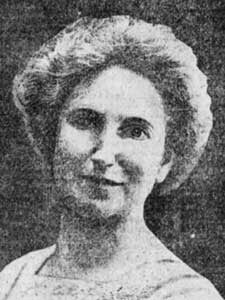
|

|
In a 1957 audio recording, recently unearthed, Marion Kenyon recalled: “We obtained tickets on the steamship George Washington to leave London, I think, in about a week. In a few days, I remained home on account of some slight headache or something. Mr. Kenyon went out with our two friends, Dr. Leader and Mrs. Joel Swift, and when they’d returned my husband said to me, ‘My, but you’ll be awfully disappointed! We don’t get to go on the George Washington. Well, I have a wonderful surprise for you! We are going on the unsinkable Titanic, the most wonderful ship that has ever been born!’ And so, on the 10 April, we embarked on the Titanic.”
Dr. Farnham-Leader and Margaret Swift were acquainted prior to this European excursion. According to researcher Mike Findlay, the ladies met through their husbands, who had mutual business, and/or social, associations. Less than one year before their voyage on the Titanic, the friends had travelled together to Bermuda, departing there as first-class passengers aboard the Bermudian, which made port in New York on May 22, 1911.
Like her travelling companion, Margaret Swift was also unusually accomplished for a lady of her time. She held LL. B. (Bachelor of Laws) and M.L. (Master of Laws) degrees from New York University, though she is not known to have actually practiced law. As of 1890, Margaret was listed as a member of the faculty of Wright’s College in New York.
Margaret Swift later gave a very thorough account in which she described the stateroom she shared with Dr. Farnham-Leader, as well as their underwhelming initial impression of the ship’s collision with the iceberg and their subsequent evacuation: “My companion, Mrs. Dr. Leader, and myself had a stateroom on deck ‘D,’ a magnificent room with two four-poster beds. We sat late at dinner on Sunday night and I did not retire until about 11 o’clock. Mrs. Leader came in at about 11:30, I should think, and I was still awake. We chatted for about fifteen minutes when there was an awful crash. But the vessel stood up well after it and we did not think much about it.

(Bruce Beveridge et al, Titanic: The Ship Magnificent, vol. 2)
“After a while I got up and threw a wrapper over me. We were assured that there was no danger, and pretty soon a friend came in with some splintered ice in his hand and told us that we had struck an iceberg. The ice was thrown all along the passageway.
“At that time no one was alarmed. The lights remained glowing and there did not seem to be anybody that was panic-stricken. I went back to bed, but I got up again and as a matter of precaution put on my dress – the one I saved. Mrs. Leader got some clothes on and we went out into the passageway. One of the officers told us that there was no danger, but soon afterward advised us to go on deck and get into the boats.
“’It is simply to be on the safe side,’ said he.
“I thought it would be just as safe to remain on board, but on second thought we went over to the port side – our room was starboard, about amidships, and there were some women there getting ready to leave the ship. I decided that it would be well to go into one of the boats, too, and the officers advised us to do so.
“It was a clear, starlit night. The heavens were beautiful. The boats were provisioned and in ours we had two barrels of water and some bread.
“The captain, poor, dear, brave man, threw in another loaf as we pulled away. I am sorry to say that I sat with my foot on that loaf for some time. As we left the captain told us to pull for a light that was far, far away from the Titanic. I think that it must have been a fishing smack, and I believe now that the captain realized that the vessel was sinking and told us to row away as fast as we could in order to get away from the suction should the boat go down. We all realized that there would be tremendous suction if the vessel went down, but we had no thought of such a thing happening. But we rowed as fast as we could. There were twenty-four women in the boat, most of them thinly clad in their night garments, and four men. One was a sailor and the other three were stewards; at least they said they were stewards, but I think one of them was a sailor.”
Dr. Farnham-Leader, Marion Kenyon, and Margaret Swift evacuated the stricken Titanic in Lifeboat No. 8, the first lifeboat lowered from the port side, at approximately 1:00 a.m., April 15, 1912. Frederick Kenyon was one of the 1,496 lives lost that night.
Dr. Farnham-Leader herself appears to have given very few interviews of her personal Titanic experience. However, on April 24, 1912, while visiting Philadelphia, she was the guest of honor at a tea held by the Quaker City Ladies’ Motor Club at the Hotel Majestic. It was said the club acted as a “women’s court of inquiry with Dr. Leader on the witness stand.” The doctor provided her audience, who listened with “breathless attention,” a detailed account of her harrowing ordeal. The printed portion of her account appears to have been lost to researchers before now.
“We were informed,” said Dr. Leader, “that the ropes were not strong enough to bear the fully loaded boats. I was in Boat No. 8, which I think was the fourth boat lowered. In it there were four women who lost their husbands. The men might as well have been with us as far as room was concerned, and they would have been doubly useful to man and row the boat, for we had but one seaman capable of handling an oar. The other three were stewards. I had to row. So did other women. We were eighteen first class passengers, all women, and four men, three of them inexperienced boatmen. No, Ismay was not on our boat. I think he was still on the ship.
“There was no systematic warning to the passengers. It was said the officers felt it was useless to call people to the decks who could not get in any of the boats. In a sense it would have only increased the horror and cruelty of it. With the boats we had, if properly handled, I have no doubt that 900 might easily have been saved. When we rowed away from the Titanic we could not see the iceberg until dawn.
“Most dreadful of all is it to think there was a ship within sight that could have saved all the 1,600 lost souls. Why she did not come to the rescue seems to me ought to be the subject of the most important part of the investigation. We all saw her, saw not only her lights, but saw her masts. She was no dream ship. It was not subjective phenomena. We all saw her.
“If this ship was so drifting without eyes, it raises more fearful suggestions than ever about ocean travel. When we could see her ordinary lights and her masts, why could not those aboard of her see our powerful distress fires?”
One year after the famous shipwreck, in April 1913, Dr. Farnham-Leader’s name was again in print, this time in connection with continued research in medical-social welfare. She was at that time appointed as one of the examining physicians of a committee headed by Dr. Godfrey R. Pisek. The committee’s goal was to establish a measurable standardization for the growth and development of children. It was expected that 100,000 children from throughout twelve states would be examined.
In November 1913, the Municipal Civil Service Commission of New York City listed Dr. Alice Farnham-Leader as candidate in the examination for Physician for Examination of Mentally Defective Children, a position that could have combined her two areas of expertise: mental illness and social welfare.
March 1914 saw Dr. Farnham-Leader serving as a character witness in the trial of Captain John A. Fish, a member of the New York Yacht Club, who figured prominently in the Boer War and received medals from King Edward and King George, who was accused of burning his yacht Senta in Edgartown Harbor for the purpose of collecting the $15,000 in insurance money.
Captain Fish had offered to sell the yacht for $6,000 shortly before the fire, and had it insured for the amount noted. At the time of the fire, he had onboard as guests several relatives, who were awakened in the early morning, put into a rowboat, and taken ashore.
A year before, in 1909, the captain had another yacht – also noted as being called Senta – which was also destroyed by fire. He had an automobile, too, which was burned.
Despite his prominence, pleading to the court by his mother, and the testimony of several character witnesses, including Dr. Farnham-Leader, Captain Fish was found guilty of burning his yacht. He was sentenced to the federal penitentiary at Atlanta, Georgia, for five years.
That same month, the busy doctor was noted to be a member of the Committee on Mental Hygiene of Clara Settlement, in Manhattan. The Clara Settlement was organized in 1907, and was essentially a physicians’ settlement, with “prominence given to the amelioration of conditions among the insane. Coincident with this work, due attention is paid to every variety of class or club which will tend to alleviate misery and develop character. One method of carrying out the policy of Clara Settlement is to persuade its friends to make use of their homes for some of its activities.”
Beginning in August 1915, Dr. Farnham-Leader began publishing a series of articles in the magazine Woman’s Home Companion. A medical commentator in the vein of what we might today associate with Dr. Oz or Dr. Phil, the doctor’s expertise infused her advice with a much higher level of accurate – though now sometimes antiquated – information.
In her first article, “Health and Good Looks,” from August 1915, Dr. Farnham-Leader expounded on the virtues of eating healthy foods, avoiding sweets, and getting plenty of proper exercise in order for a woman to keep her looks and her health at their best. In the October 1915 issue of the Companion, in an article titled “Why Grow Old?” she advised to never allow oneself to be lazy, to eat balanced, properly-proportioned meals, and to drink plenty of water between meals. “The Business Woman’s Health,” from February , was aimed at working ladies, advising them on such common ailments as headaches, as well as sore feet. The June 1916 issue featured “Pretty Girls from Plain Ones,” advising on healthy ways to keep hair, teeth, and nails looking youthful. Dr. Farnham-Leader answered questions in an “About Your Health” column in the December 1916 Companion, providing advice on the removal of blackheads, and answering health riddles such as, “Can I cure constipation without medicine?”
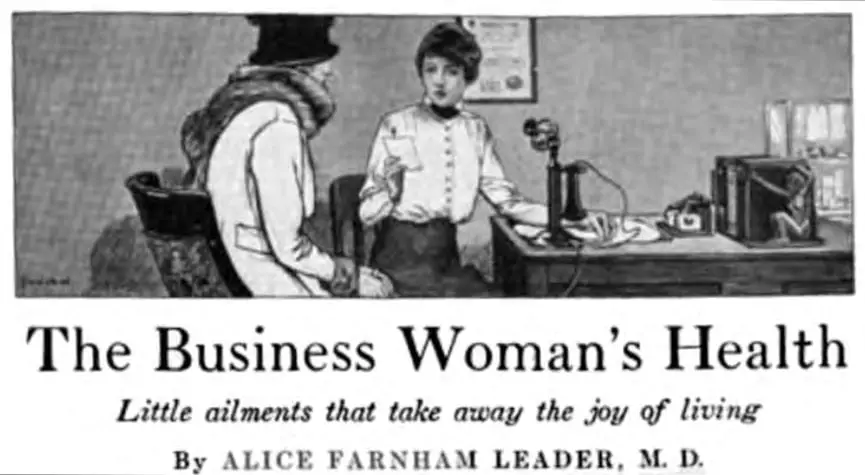
(Woman’s Home Companion, February 1916)
It is not known when Dr. Alice Farnham-Leader’s remarkable career officially came to an end. The 1920s and 1936 have been put forth; however, there appears to be no definitive documentation to answer the question. This author could find no mention of her in regards to her medical career after the December 1916 issue of Woman’s Home Companion. The doctor would have been fifty-four years old at the time and, if not in the midst of retirement, she seems to have significantly slowed down by this time.
Ellis Island passenger records show a final recorded voyage in 1928. The doctor returned home from Havana, Cuba on August 14, 1928 aboard the Siboney. Her birth date was listed as May 10, 1873, rather than 1862. However, with this passenger’s place of birth being listed as Batavia, New York, and her then-current address stated as being 125 West 12th Street, New York, it is almost certainly the doctor.
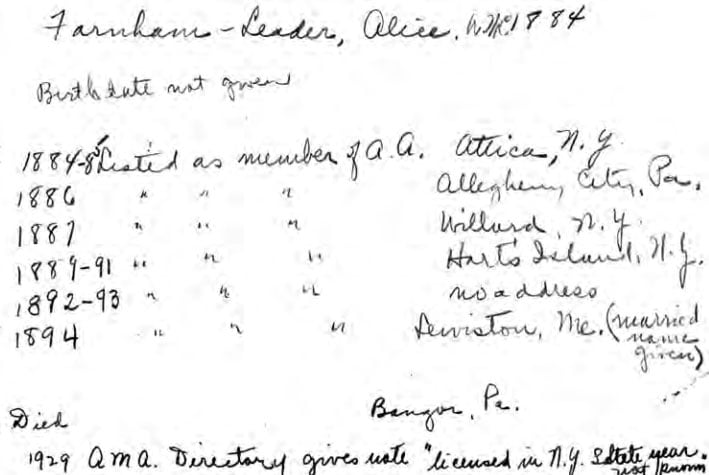
(Author’s collection)
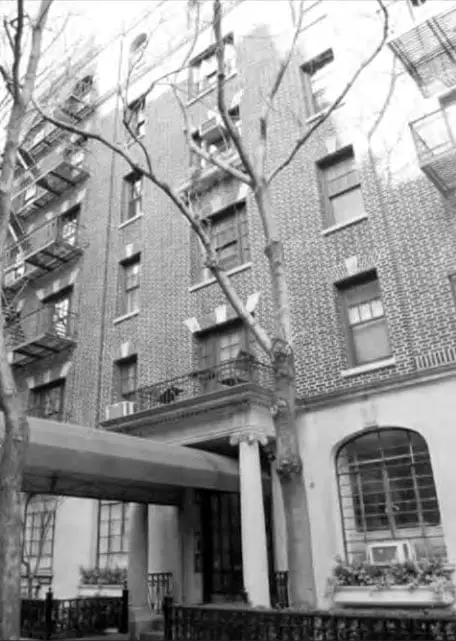
(wikimapia.org)
In September 1939, it was reported that Dr. Farnham-Leader and an unnamed sister had leased an apartment at 361 Holt Avenue in Winter Park in Orlando, Florida. The sisters planned to arrive in Winter Park the first week of October and stay the winter.
A life of service and renown came to an end on Thursday, April 20, 1944, when Dr. Alice Farnham-Leader passed away in a hospital in Orlando, aged eighty-one. Her funeral was held Saturday, April 22, at 11:00 a.m. from the Eiselstein-Wigginton Home for Funerals, with Father O’Farrell officiating. Her body was then placed in the funeral home’s receiving vaults, before being transported to Attica, New York. The good doctor was laid to rest in Forest Hill Cemetery.
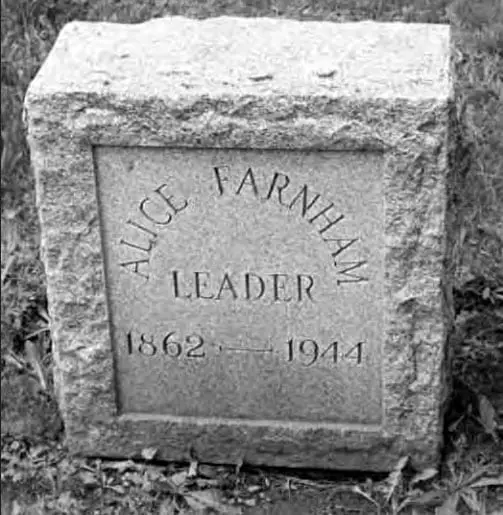
(Edward Toy via find-a-grave.com)
In 1950, it was reported that the doctor’s home in Nyack, called “Treetops,” had been purchased by a Raymond Dally.
Today remembered in passing for having been present on that cold, starlit night in April 1912 when the Titanic sank in mid-ocean, Dr. Alice Farnham-Leader was a woman of great accomplishments whose achievements in medical research silently echo in modern medical facilities to this very day.
Acknowledgements
The author wishes to thank, once again, Michael Poirier, who provided rare newspaper articles from his extensive files for my use, as well as helpful advice and suggestions as this article took shape. He also forwarded the 1957 audio recording of Marion Kenyon. Mike Findlay’s encyclopedic knowledge of Titanic passengers was called upon to clarify the relationship between Dr. Alice Farnham-Leader and Margaret Swift. Matthew Herbinson, archivist at Drexel University, the current repository for the archives of the Woman’s Medical College of Philadelphia, diligently searched the school’s extensive archives for any information on Dr. Farnham-Leader. Michael Beatty, a master at finding obscure sources, unearthed and made available the audio recording of Marion Kenyon. George Behe kindly shared information on Dr. Alice Farnham-Leader from his archives. Dr. David Mitchell, MD reviewed the text and gave insight drawn from his years as a practicing physician.
Sources
Harrisburg Daily Independent, March 14, 1884
Phillipsburg Herald, March 27, 1884
Buffalo Weekly Express, October 21, 1886
Democrat and Chronicle, October 21, 1886
Morris Tribune, December 18, 1889
Buffalo Evening News, January 23, 1890
The Buffalo Times, July 19, 1890
The Brooklyn Citizen, July 28, 1890
The American Journal of Insanity, Volume 47, 1890
Transactions of the New York State Medical Association for the Year 1892, 1893
Buffalo Courier, July 14, 1893
The Boston Globe, March 24, 1896, July 9, 1897
The Portland Daily Press, October 10, 1900
Buffalo Courier, October 14, 1900
Transactions of the Annual Meeting of the Alumnae Association of the Woman’s Medical College of Philadelphia, 1900
Documents of the Assembly of the State of New York, Volume 4, 1902
Transactions of the Maine Medical Association, Volume 14, 1903
The Buffalo Times, May 6, 1906
The Sun, August 25, 1907
The Brooklyn Daily Eagle, April 16, 1912, April 19, 1912
The Philadelphia Inquirer, April 24, 1912, April 25, 1912
Rutland Daily Herald, April 29, 1913
The New York Times, November 12, 1913
The Boston Globe, March 13, 1914
The Brooklyn Daily Eagle, March 21, 1914
Woman’s Home Companion, August 1915, October 1915, February 1916, June 1916, December 1916
The Orlando Sentinel, September 19, 1939
Orlando Evening Star, April 21, 1944
Rockland County Leader, March 23, 1950
Encyclopedia Titanica (2019) Alice May Leader (ref: #183, last updated: 6th November 2019, accessed 1st March 2021 07:27:45 AM) URL: https://www.encyclopedia-titanica.org/titanic-survivor/alice-leader.html
Encyclopedia Titanica (2019) Margaret Welles Swift (ref: #291, last updated: 17th September 2019, accessed 28th February 2021 19:35:15 PM) URL: https://www.encyclopedia-titanica.org/titanic-survivor/margaret-welles-swfit.html
“Woman’s Medical College of Pennsylvania” by Melissa M. Mandell, The Encyclopedia of Greater Philadelphia: https://philadelphiaencyclopedia.org/archive/womans-medical-college-of-pennsylvania/

Comment and discuss